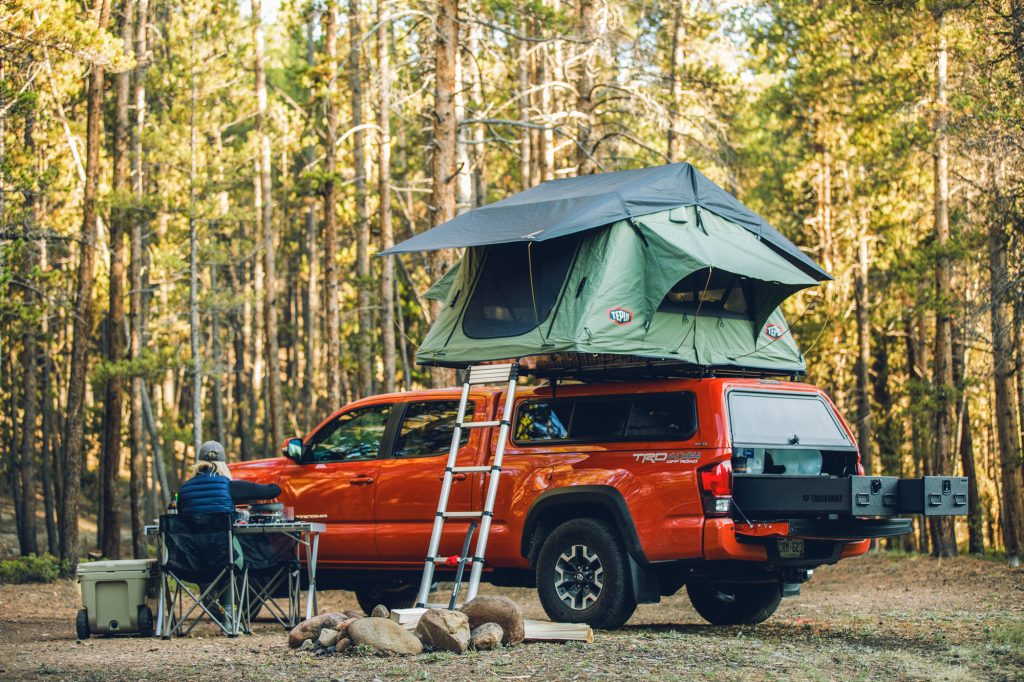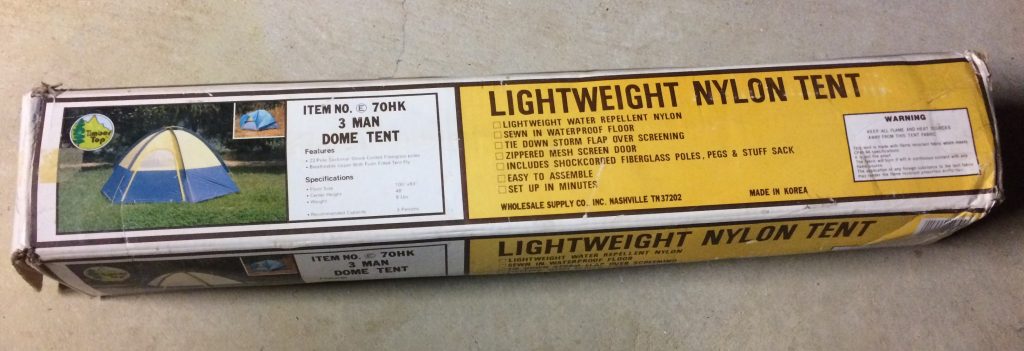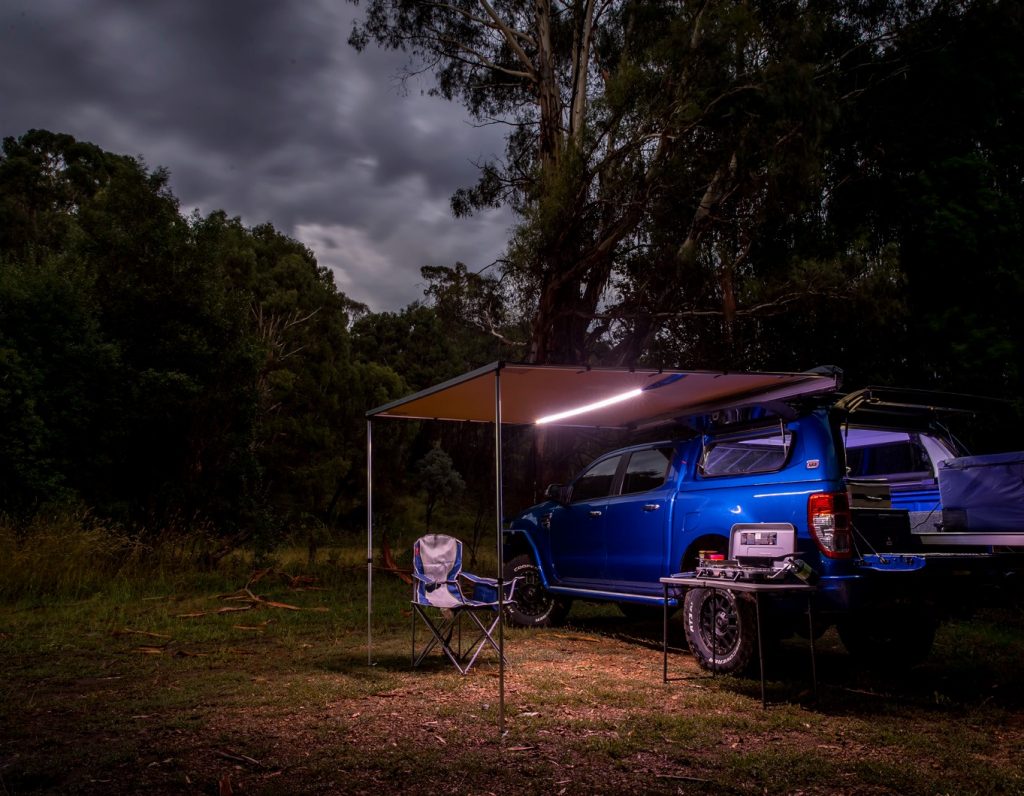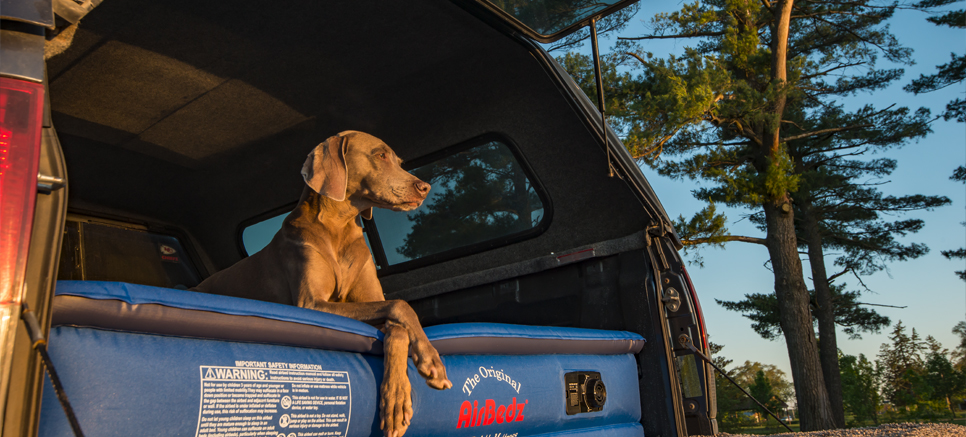
While it’s easy to love the idea of overlanding through a pristine landscape, off-roading is tough. And having the right overlanding, off-road, and car camping gear is vital. So we’ve got a few Overlanding Essentials articles to help you tackle the terrain.
Not sure what overlanding is? Read this.
Let’s Talk About Tents, Shelter & Sleeping.
A good night’s rest isn’t a luxury—it’s an absolute necessity to ensure your mind stays sharp and your muscles recover from fatigue.
Tents and shelter mean more than sleep too. A good shelter provides space to store food, electronics, and clothing away from rain and snow. Perhaps more importantly, tents shield your gear against Mother Nature and her army of critters. And we’re not just talking about ants and mice; a shelter like a truck bed or roof top tent can be almost mandatory if you’re overlanding in an area with dangerous wildlife or adverse weather.
So let’s explore some basic camping shelters that can be useful for overlanding.
Overlanding Essentials: Vehicle, Roof Top & Truck Bed Tents
For starters, overlanding doesn’t mean you have to sleep in (or even near) your vehicle. So don’t worry if you don’t have space to roll out a sleeping bag in your back seat. Something like a standalone dome tent will often be perfectly adequate for overlanding.

That said, a vehicle tent will make overlanding and camping a lot easier. For instance, a vehicle tent can be located alongside of a car, in a truck bed, or on the roof rack of an SUV. This sort of overlanding tent typically uses part of the vehicle’s body as a structural component, often making the tent itself more sturdy. (Which also means it’ll probably withstand the elements and inclement weather better.)
Another advantage of a vehicle tent is that they’re usually easier to set up, so they’re a go-to choice for folks who want a quick-deployment campsite. That can be really handy if the weather turns quickly or if you want to spend more time on the journey and less time fidgeting with tent poles.
As alluded to in the intro, an overlanding rooftop tent can be very beneficial because it keeps your sleeping area above any curious insects, reptiles, and animals. There are other pluses to a roof top tent too: it can keep you off jagged rocks, wet soil, or frozen ground, and keep you out of harms way in the event of a sudden downpour or mudslide.
Got a truck? Then a truck bed tent is also an option. A truck bed tent offers many of the advantages of a rooftop tent, with perhaps a bit more convenience than a rooftop version. IE, you don’t have to climb a ladder to get in.
How to Choose an Overlanding Tent
The honest answer is: it’s up to you. Decide on what kind of overlanding you’re into, how receptive you are to “roughing it,” how much camping gear you have, and what your vehicle can accommodate.

And if the benefits of a vehicle tent (roof top, truck bed, or otherwise) appeal to you, make sure you check the tent’s fitment and application. A lot of vehicle tents are designed for a specific car, truck, or SUV model—or at least a specific type of vehicle. That’s especially true for vehicle roof top tents. Obviously you’ll want to confirm your roof’s weight capacity and the tent’s footprint to make sure it all fits up there.
Overlanding Essentials: Vehicle Shelters
If you’re planning to sleep in your vehicle, then it may make sense to bring along a quick-deployment shelter so you can work (and cook) outside with some protection from the sun, rain, and snow.
That’s why portable shelters, canopies, and vehicle awnings are appealing. They let you create a multi-function shelter space at your campsite. And these shelters are particularly handy if you need to do some repairs to your overlanding car, SUV, or truck. Plugging a tire isn’t very fun—especially in scorching desert heat or a freezing drizzle.

Just like a vehicle tent, if you’re looking at an awning for your overlanding or camping adventure, make sure it is compatible with your vehicle.
Overlanding Essentials: Truck Bed Mattresses
Truck owners have a unique option when it comes to sleeping arrangements. Most truck beds are plenty big enough to fit a comfy air mattress, and the aftermarket has stepped up by designing inflatable beds that conform to the unique dimensions of a truck bed.

What’s neat about a lot of these truck bed camping mattresses is that they often come with a battery powered air pump, so you can inflate/deflate them in a handful of minutes. That means your truck bed can actually be used for cargo while travelling. Then when you arrive at your campsite, you can move some gear around, inflate an air bed, and quickly create a comfortable place to bed-down for the night.
If you’re buying a truck bed air mattress, make sure you get one that fits the exact dimensions of your truck bed. Don’t worry though, unless you’ve got a Studebaker Champ, you should have no problem finding a mattress for most common truck bed sizes.
Overlanding Tents, Shelter & Sleeping Essentials: Takeaway
While it’s easy to get wound-up about the adventure, don’t overlook the importance of sleep. Being prepared for the weather and environment is a critical competent of camping, and overlanding is no different. Not that there are many to begin with, but this is one area of overlanding gear where you don’t want to cut corners.
How do you sleep while you’re overlanding? We’d love to hear about your setup and learn any tips. Let us know in the comments section.
And check out the other stories in our expanding Overlanding Essentials series.

[…] While it’s easy to love the idea of overlanding through a pristine landscape, off-roading is tough. And having the right overlanding, off-road, and car camping gear is vital. So we’ve […] Read full article at http://www.onallcylinders.com […]
[…] wasted energy, and it’s also a danger—a hot off-road lamp can singe paracord, melt holes in tents, and leave a nasty surface […]
[…] A truck bed storage rack may be a non-starter if you have a truck cap or plan on sleeping on a truck bed air mattress (or use a truck tent). A truck bed rack can be quite large too, which means you might be looking at […]
[…] Overlanding Essentials: Tents, Shelter & Sleeping […]